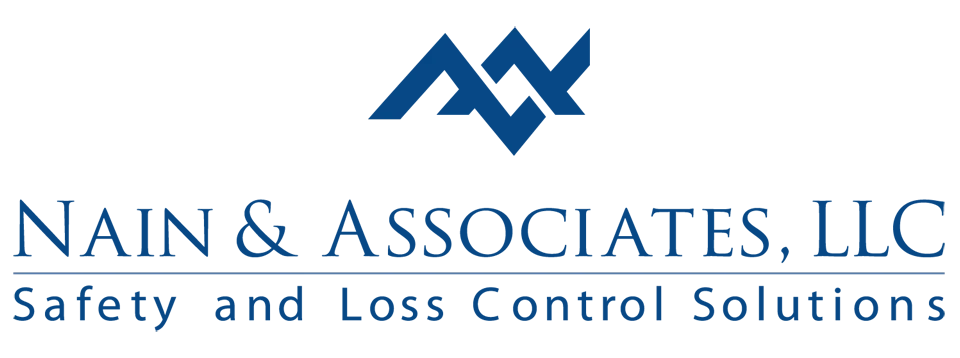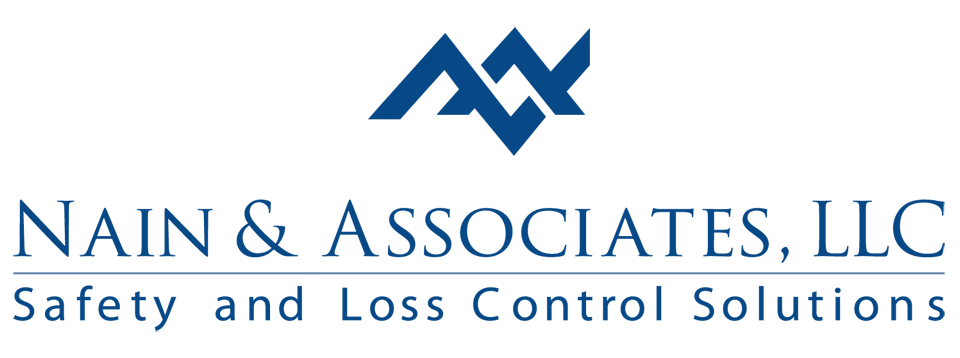

(828) 471-4317
Now Offering Spanish Safety Training!

Now Offering Spanish Safety Training!
Fall Hazards National Emphasis Program: Jobsite Checklist to Avoid Citations
Avoid Fall Hazard Citations
Why the Fall NEP Matters

OSHA’s Fall Hazards National Emphasis Program increases programmed and unprogrammed inspections focused on falls, the leading cause of fatalities in construction and a persistent driver of serious injuries in general industry. Inspectors prioritize obvious exposures—unprotected edges, improper ladder use, and inadequate fall protection planning or training.
Under the NEP, area offices select inspection targets using incident data, referrals, and safety campaigns. If compliance officers see apparent fall hazards from a public way, they may initiate an inspection. Once onsite, they evaluate written programs, training records, equipment condition, supervision, and control implementation.
To reduce risk and citations, employers should confirm guardrails, covers, and personal fall arrest systems match tasks; verify ladder setup and access; secure scaffolds and working platforms; and plan rescue. The checklist below streamlines these steps for supervisors, crews, and subcontractors in the field.

Top Inspection Triggers and Common Citations
Unprotected sides and edges, holes, and leading edges at six feet or more in construction—or four feet in general industry—are immediate triggers. Inspectors look for guardrails, covers secured and labeled for load, and controlled access zones where appropriate. Exposed rebar, open shafts, mezzanine perimeters, roof work, mezzanine lifts, and loading docks draw attention, especially when materials handling or weather increases slip and trip risks.
Portable ladders remain a frequent citation: wrong type, damaged rails, missing feet, standing on top steps, or failing to secure at the top. Extension ladders must extend three feet above the landing or be secured by a graspable handhold. Maintain three points of contact, face the ladder, and keep loads within the worker’s centerline. For fixed ladders, verify cages, rests, fall arrest, and climb clearance.
Scaffolding and aerial devices bring layered duties: competent-person oversight, inspected components, firm foundations, guardrails or PFAS at required heights, safe access, and manufacturer-rated loads. On mobile elevating work platforms, tie off if required, close gates, and avoid climbing rails. For roofing, ensure warning lines, monitors, or restraint systems meet criteria. Document training, daily inspections, and corrective actions; missing records often convert near-misses into citations during NEP-driven visits. Robust documentation proves diligence.
Field Checklist: Before Work Starts

Pre-plan tasks with fall exposure. Identify edges, holes, fragile surfaces, ladders, scaffolds, MEWPs, and access routes. Choose controls that fit the work: guardrails, covers, restraint, or arrest. Confirm anchor locations, device compatibility, and rescue method. Assign a competent person and brief crews on roles, hazards, controls, and weather.
Inspect gear. Check harness labels, webbing, D-rings, connectors, lifelines, SRLs, and lanyards for damage or expiry. Verify guardrail height and strength, cover load ratings, ladder feet and locks, scaffold planks, base plates, tie-ins, and access. Stage rescue kit, first aid, and communication. Test anchors.
Brief the crew. Review access routes, exclusion zones, and drop zones. Confirm ladder angle and securement, scaffold tags, and MEWP pre-use checks. Assign spotters when moving materials near edges. Clarify stop-work authority, emergency contacts, and how to report unsafe conditions without delay today.
Pre-plan tasks with fall exposure. Identify edges, holes, fragile surfaces, ladders, scaffolds, MEWPs, and access routes. Choose controls that fit the work: guardrails, covers, restraint, or arrest. Confirm anchor locations, device compatibility, and rescue method. Assign a competent person and brief crews on roles, hazards, controls, and weather.
Inspect gear. Check harness labels, webbing, D-rings, connectors, lifelines, SRLs, and lanyards for damage or expiry. Verify guardrail height and strength, cover load ratings, ladder feet and locks, scaffold planks, base plates, tie-ins, and access. Stage rescue kit, first aid, and communication. Test anchors.
Brief the crew. Review access routes, exclusion zones, and drop zones. Confirm ladder angle and securement, scaffold tags, and MEWP pre-use checks. Assign spotters when moving materials near edges. Clarify stop-work authority, emergency contacts, and how to report unsafe conditions without delay today.

During work, keep protection active as conditions change. Install guardrails as platforms grow. Replace damaged covers immediately. Move warning lines and add monitors when the work zone shifts. Maintain ladder three-point contact, reposition instead of overreaching, and keep areas clear of cords and debris. Pause when wind, rain, ice, or lighting changes introduce slip risk or reduce visibility; recheck anchors, tie-offs, and scaffold stability before resuming. Document adjustments in the daily log and toolbox talk.
After work, secure openings, ladders, and access points. Remove temporary anchors, tag damaged equipment, and store harnesses clean and dry. Update scaffold tags and lock out incomplete platforms. Record near-misses, note weather, and assign corrective actions with due dates. Schedule refresher training if patterns emerge. Share lessons with subcontractors and clients so expectations stay aligned, onboarding improves, and hazards are controlled earlier on the next job or shift. Capture photos that document abatement and controls.
What Inspectors Expect to See
Expect questions about your hazard assessment, hierarchy of controls, and how you decide between guardrails, restraint, and arrest. Inspectors will ask who is the competent person, how they evaluate changing conditions, and what rescue plan applies. They often compare real conditions to your written program, work orders, and daily pre-task plans to confirm that controls match the tasks and risks observed on site that day.
Training and authorization are central. Be ready to show ladder user training, scaffold user and erector training, MEWP operator familiarization, and rescue drills. Supervisors should know how to spot wear, remove defective equipment from service, and document replacements. If subcontractors are present, demonstrate how you communicate expectations, review their plans, and verify qualifications before permitting elevated work near edges, openings, or changing roof conditions.
Documentation closes the loop. Provide recent inspections, corrective actions, and photos that demonstrate how hazards were controlled. Keep purchase records for anchors, SRLs, and lifelines, plus service logs. Show that near-miss trends drive improvements: adding guardrails, repositioning access, or changing equipment. Clear, consistent records help inspectors see a functioning system rather than isolated fixes, lowering citation likelihood and strengthening your defense if citations are proposed. Consistency across sites builds confidence overall.
Ten Quick Checks That Prevent Falls
Edges and openings: install guardrails or covers rated for load, secured, and labeled. Ladders: right type, good feet, correct angle, secured at top, extend three feet, and keep three points of contact. Scaffolds: stable base, planks secured, proper access, tags current, and guardrails installed.
Roof work: set warning lines at correct distances, assign monitors where allowed, restrain or arrest at edges, and control skylights. MEWPs: pre-use inspection, closed gates, proper tie-off when required, and work within platform. Housekeeping: remove debris, cords, and snow; control water; manage delivery routes to avoid backs to edges.
People and paperwork: verify competent-person oversight, current training, user authorizations, daily inspections, and a practiced rescue plan. Record findings on pre-task plans, scaffold tags, and equipment checklists. Photograph controls before work and after changes so documentation aligns with conditions throughout the shift.

If an OSHA team arrives under the NEP, keep the group small, confirm scope, and route the walk to active elevated work first. Demonstrate controls in place, show pre-task plans, and point out any abatement completed during the visit. Photograph identical items inspectors document. Avoid speculation; answer precisely, and assign a note-taker to capture requests, sample locations, and commitments—then verify times and who will deliver documents. Confirm credentials, PPE, photo limits, and trade-secret protections early.
Afterward, debrief the crew. Start quick fixes, assign owners and dates for larger items, and implement interim protections. If citations follow, review facts against your records, photographs, and training rosters before responding. Use the experience to refine ladder, scaffold, and roof procedures, improve supervision, and schedule targeted refreshers. Share trends across sites so leaders tackle root causes, not symptoms. Treat every visit as a learning event that strengthens culture and prevents falls on future jobs.
How Nain & Associates Can Help
Nain & Associates helps crews control fall risks and pass NEP scrutiny with practical programs, bilingual training, and on-site coaching. We evaluate worksites, inventory tasks with exposure, and build control matrices that pair each task with guardrails, restraint, or arrest. Our team establishes competent-person roles, rescue plans, and inspection routines that supervisors can execute—without slowing production—while aligning procedures and records with OSHA’s expectations for documentation and accountability.
We deliver targeted classes: ladder and scaffold user, MEWP operator and supervisor, fall restraint and arrest, and hands-on rescue drills that build real competence. For projects, we can mobilize on-site safety professionals to run daily inspections, tag scaffolds, verify anchor points, and coach foremen. Our audits mirror OSHA’s approach, identifying gaps in planning, equipment, and training, then helping crews close them quickly with workable fixes and clear, defensible evidence.
Whether you manage one facility or a multi-state portfolio, we align fall protection with client requirements and budgets. Expect checklists, toolbox-talk scripts, and inspection templates you can deploy. We also help standardize subcontractor expectations and prequalification language. Ready to strengthen your program before inspectors arrive? Call (828) 471-4317 or request services to start a focused, defensible plan that keeps people safe and projects moving.
Have Questions About What We Offer?
To learn more about our services, contact us today!
Have Questions About What We Offer?
Contact us to learn more about our services

Speak with a
safety Specialist
Workplace Safety Training & Consulting Experts for
Charlotte, Hickory, Asheville, North Carolina and
the Southeast for since 2005!
Design By: Customers.Plus
© 2025 | Nain & Associates LLC


